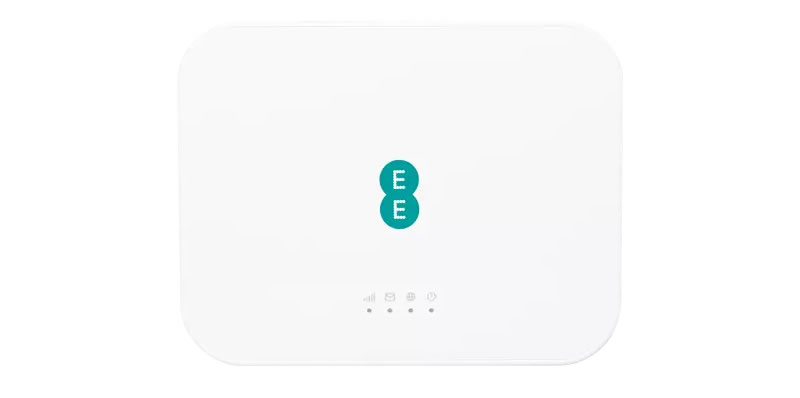The EE 4G WiFi is one of EE’s two mobile broadband offerings – the other being the EE 5G WiFi, which is faster, but only if you have a 5G signal, and it also costs more.
The EE 4G WiFi then is the more affordable choice if you want to bring Wi-Fi to all your gadgets when out and about. And given that 4G coverage is far more widespread than 5G, you wouldn’t always benefit from a faster 5G model anyway.
So is the EE 4G WiFi the sensible mobile broadband choice? And is mobile broadband the ideal option for you in the first place? We aim to answer all of that below.
How does the EE 4G WiFi work?
Like other mobile broadband devices, the EE 4G WiFi is a compact gadget that’s designed to be small and light enough to carry around with you. It’s battery-powered so it doesn’t need plugging in, meaning you can use it even when outside or on a train, and it will beam out a 4G-powered Wi-Fi network that nearby devices can connect to.
This means that as long as there’s a 4G (or 3G) signal in the area, you’ll be able to connect anything with Wi-Fi support to the internet. So gadgets such as laptops and tablets can be got online even when there’s no Wi-Fi available.
And even if there is Wi-Fi available, the EE 4G WiFi can make for a better choice than public Wi-Fi, as it’s guaranteed to be more secure, potentially faster, and doesn’t make you register or pay like some public Wi-Fi does.
While the EE 4G WiFi is designed primarily for travel, it could also suit as a temporary Wi-Fi solution when your home Wi-Fi is down or yet to be installed, since there’s no setup required and it’s available on 30-day plans (as well as some longer plans).
Setup
Setting up the EE 4G WiFi is as simple as putting the battery and SIM card in, charging it, and switching it on. It will then broadcast a 4G-powered Wi-Fi network that you can connect devices to by using the supplied network name and password.
As with any router you will of course be able to change the network name and password if you like, but as far as the basics go this is about as simple as router setup gets.
Note however that other mobile broadband routers are similarly simple to set up, so this is an advantage of the device category as a whole rather than just of the EE 4G WiFi.
Performance and speeds
EE claims that you can get average download speeds of 40Mbps “in some places” with the EE 4G WiFi, so in others your speeds will be lower. Of course, peak speeds will be much higher – the plans you can currently get the EE 4G WiFi on top out at 100Mbps, and while it’s unlikely you’ll often hit that limit, you may sometimes get a lot closer.
This also all makes the EE 4G WiFi potentially faster than standard fibre broadband, but nowhere near as fast as full fibre (also known as fibre to the premises) or as 5G, both of which offer peak speeds of around 1Gbps.
Still, this should be fast enough for most use cases, and being on EE is to its benefit, as EE is the UK’s fastest 4G network going by most third-party test results.
Router features
The EE 4G WiFi can get up to 32 devices online. That’s in line with many rival products (some of which will be discussed below under the ‘Alternatives’ heading), and more than some. It should also be more than enough for most situations where mobile broadband is needed.
It also has a 30 metre Wi-Fi range, so its Wi-Fi network can reach beyond just one room or vehicle. You could in fact blanket a whole house with Wi-Fi from the EE 4G WiFi, so that’s handy for if you’re using it as a temporary Wi-Fi option in your home or office, or if you visit a holiday home.
The other main feature of the EE 4G WiFi is its battery, which is quite small at 2,150mAh, but that should still be good for around 6 hours of life, so this can you see through a long journey or most of a day out.
Plans
The EE 4G WiFi is available on both 1-month and 24-month plans, so you can choose whether you want a short term plan with no commitment or whether you’re likely to hold onto the device for a long time – in which case a 24-month plan is a good option, as these cost less per month and nothing upfront.
There are a range of data options, up to unlimited, with plan pricing varying from £14 per month with £0 upfront (for a 24-month plan with 5GB of data), to £55 per month with £40 upfront (for a 1-month plan with unlimited data).
Note that in all cases plans top out at 100Mbps currently, which is less than the hardware is potentially capable of, but in line with the peak speeds you can realistically expect on the UK’s 4G networks.
These prices make the EE 4G WiFi one of the most expensive 4G mobile broadband options available, but it’s in line with what we’d expect from EE’s pricing, and as noted EE is quite possibly the fastest 4G network – lots of tests certainly suggest so.
Alternatives
Three 4G Plus MiFi
The Three 4G Plus MiFi is a very similar device to the EE 4G WiFi, but of course it’s on Three’s network instead. It’s compact and has peak speeds of up to 300Mbps (though real world speeds are likely to be similar to EE’s offering). However, it supports half as many simultaneous connections at 16 – it is typically a lot cheaper though.
Vodafone 4G Mobile Hotspot
The Vodafone 4G Mobile Hotspot is Vodafone’s take on this idea, and other than its design is extremely similar to the EE 4G WiFi, with the same battery capacity and support for just as many simultaneous connections. It’s cheaper too, though Vodafone’s network arguably isn’t as good overall.
EE 5G WiFi
If you want to be on EE’s network but are looking for an alternative then consider the EE 5G WiFi. This is an even better device with far higher speeds (as it can tap into 5G), as well as a larger, longer-lasting battery. But it’s priced accordingly.
EE Smart 4G Hub
If you just want internet for your home or another location that has a power supply available then you could consider the EE Smart 4G Hub instead. This doesn’t have a battery as it’s designed to provide 4G home broadband, so it’s meant to stay plugged in and switched on at all times. But there’s nothing to stop you bringing it with you when you go elsewhere – you’ll just need a power supply to use it.
Conclusion
The EE 4G WiFi is a highly capable 4G mobile broadband device, and one which matches or beats most rival 4G devices. It supports more simultaneous connections than the Three 4G Plus MiFi, and it’s on one of the best possible 4G networks.
So it’s a great choice, but with two significant issues. One is the price – this is undeniably expensive, especially compared to rival devices. Two if the fact that it’s a 4G router at all, because now that 5G is quite widely available, the EE 5G WiFi (or a similar device from another network) will be a better choice for a lot of people.










